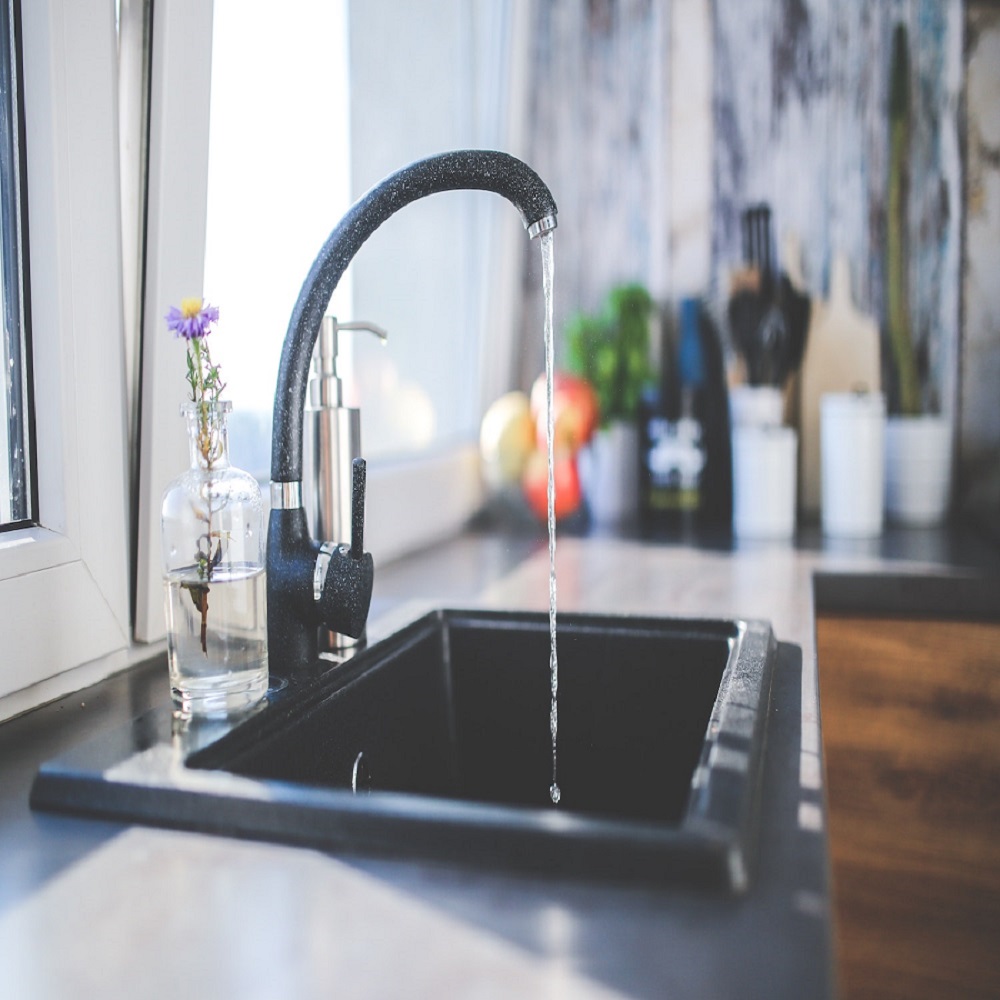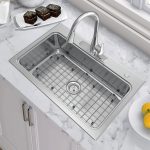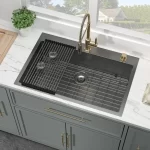Selecting the right material for your kitchen sink is a crucial decision that impacts both functionality and aesthetics. With a wide range of materials available, each offering unique benefits and drawbacks, it’s important to understand what makes each option suitable for different needs and preferences. This comprehensive guide will explore the most popular materials used for kitchen sinks, helping you make an informed choice based on durability, maintenance, style, and cost.
Understanding Your Needs and Preferences
Identifying Key Factors
Before diving into specific materials, it’s essential to consider your needs and preferences for a kitchen sink. Think about the following factors:
- Durability: How much wear and tear will the sink experience? Consider whether you need a material that can withstand heavy use.
- Maintenance: How much time are you willing to spend on upkeep? Some materials require more frequent cleaning and care.
- Aesthetic Appeal: What style or look are you aiming for? Different materials offer varied visual effects and finishes.
- Budget: How much are you willing to invest? Costs can vary significantly depending on the material and design.
Assessing these factors will guide you in choosing a material that fits your lifestyle and enhances your kitchen’s functionality and design.
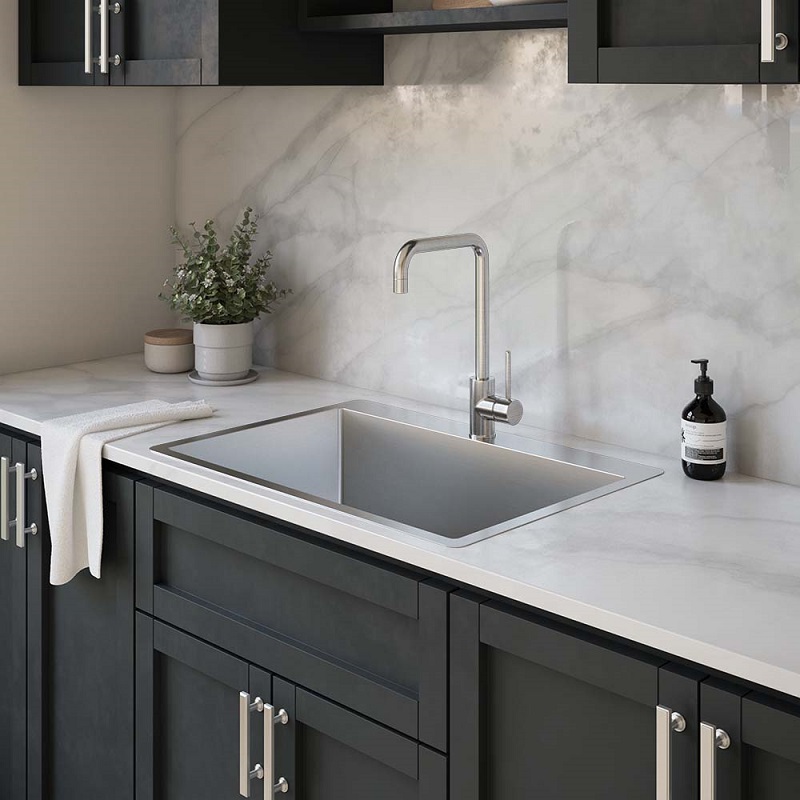
Stainless Steel Sinks
Overview of Stainless Steel
Stainless steel is one of the most popular materials for kitchen sinks due to its durability, ease of maintenance, and sleek appearance. Made from a blend of iron, chromium, and nickel, stainless steel sinks are resistant to rust, corrosion, and staining, making them ideal for busy kitchens.
Advantages of Stainless Steel
One of the primary advantages of stainless steel sinks is their durability. They can withstand heavy use, resist scratches, and are less likely to crack or chip compared to other materials. Additionally, stainless steel is relatively easy to clean; a simple wipe with a damp cloth and mild detergent is often sufficient. Its reflective surface also adds a modern touch to any kitchen.
Disadvantages of Stainless Steel
While stainless steel sinks are durable, they are not entirely immune to dents and noise. The material can be prone to scratching and water spots, which may require regular polishing to maintain its appearance. Furthermore, the sink’s sound can be louder compared to other materials, though soundproofing options are available.
Composite Granite Sinks
Introduction to Composite Granite
Composite granite sinks are made from a blend of crushed granite and acrylic resins. This combination creates a material that mimics the look of natural stone but offers enhanced durability and a lower price point. Composite granite sinks are known for their resistance to scratches, stains, and high temperatures.
Benefits of Composite Granite
The primary benefit of composite granite sinks is their durability. They are highly resistant to scratches, chips, and stains, making them a great choice for busy kitchens. Their non-porous surface also resists bacteria and odors, contributing to a more hygienic kitchen environment. Additionally, composite granite sinks come in various colors and finishes, allowing you to match them to your kitchen décor.
Drawbacks of Composite Granite
Despite their durability, composite granite sinks can be prone to discoloration over time, especially if exposed to harsh chemicals. They may also be more expensive than some other options, though they often offer a good balance between cost and performance. Additionally, they can be quite heavy, so proper installation and support are required.
Cast Iron Sinks
Characteristics of Cast Iron Sinks
Cast iron sinks are coated with a layer of enamel, providing a classic and elegant look that has been a staple in kitchens for many years. The material is made by casting molten iron into a mold and then applying a vitreous enamel coating, which gives it a glossy, smooth finish.
Advantages of Cast Iron
One of the key advantages of cast iron sinks is their durability. The enamel coating makes the sink resistant to stains, scratches, and heat, and the cast iron base provides a sturdy and long-lasting structure. Cast iron sinks also offer a traditional and timeless aesthetic that can add a touch of elegance to any kitchen.
Disadvantages of Cast Iron
While cast iron sinks are durable, they are also heavy and require strong support during installation. The enamel coating, although resistant to many types of damage, can chip or crack if subjected to heavy impacts. Additionally, cast iron sinks may require regular maintenance to keep the enamel in good condition and prevent rusting underneath if the coating becomes damaged.
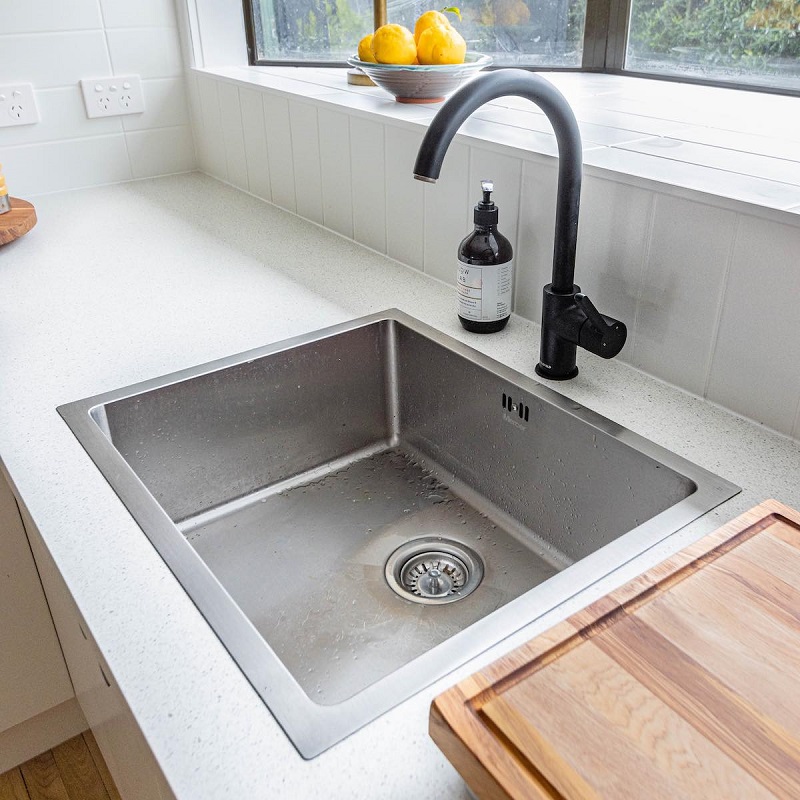
Fireclay Sinks
Understanding Fireclay
Fireclay sinks are made from a blend of clay and minerals that are fired at high temperatures, creating a dense and durable material with a glossy finish. They are known for their resilience and classic look, often found in farmhouse-style kitchens.
Pros of Fireclay Sinks
Fireclay sinks are highly resistant to scratches, stains, and high temperatures. Their smooth, non-porous surface makes them easy to clean and maintain, and they often retain their color and finish over time. The material is also quite durable and can handle heavy use without showing signs of wear.
Cons of Fireclay Sinks
One of the main drawbacks of fireclay sinks is their weight. Like cast iron, fireclay sinks are heavy and require proper support for installation. They can also be more expensive than other materials, and while they are resistant to stains and scratches, they can chip or crack if subjected to heavy impacts.
Acrylic Sinks
Overview of Acrylic Sinks
Acrylic sinks are made from a solid surface material that combines acrylic resins with natural minerals. This material is lightweight, versatile, and available in a wide range of colors and styles. Acrylic sinks are known for their seamless appearance and ease of maintenance.
Benefits of Acrylic Sinks
Acrylic sinks offer a number of advantages, including their lightweight nature, which makes them easier to handle and install compared to heavier materials. They are also available in a wide range of colors and designs, allowing for greater customization to match your kitchen décor. The non-porous surface resists stains and is easy to clean with standard household cleaners.
Drawbacks of Acrylic Sinks
While acrylic sinks are durable, they can be prone to scratching and denting, especially if subjected to heavy use or sharp objects. Additionally, they may require more frequent touch-ups to maintain their appearance, and their color can fade over time with exposure to sunlight. They may also be more susceptible to heat damage compared to other materials.

Copper Sinks
Introduction to Copper Sinks
Copper sinks are a distinctive choice, known for their rich, warm tones and unique patina that develops over time. Made from solid copper, these sinks add a touch of rustic charm and elegance to any kitchen.
Advantages of Copper Sinks
Copper sinks are highly durable and naturally resistant to bacteria and germs, thanks to the antimicrobial properties of copper. They also develop a beautiful patina over time, which can add character and a unique look to your kitchen. Copper sinks are relatively easy to clean and maintain, often requiring only mild soap and water.
Disadvantages of Copper Sinks
One of the primary drawbacks of copper sinks is their cost. They can be significantly more expensive than other materials. Additionally, copper sinks require regular maintenance to preserve their appearance and prevent tarnishing. They can also be prone to scratches and dents, though these can often be buffed out or added to the sink’s patina over time.
Conclusion: Making the Right Choice for Your Kitchen
Balancing Functionality and Style
Choosing the best material for your kitchen sink involves balancing functionality with style. Each material offers distinct advantages and considerations, so it’s important to evaluate your specific needs, budget, and aesthetic preferences. Stainless steel offers durability and a modern look, while composite granite and fireclay provide resilience and classic appeal. Cast iron, acrylic, and copper each bring unique characteristics and visual appeal to the table.
Considering Long-Term Value
When making your decision, consider the long-term value of the sink material. Factors such as durability, maintenance requirements, and the potential for damage or wear will affect how the sink performs over time. Investing in a high-quality material that suits your lifestyle can ensure that your kitchen sinks remains a functional and stylish centerpiece for years to come.
By carefully evaluating the options and understanding the benefits and drawbacks of each material, you can select the kitchen sink that best meets your needs and enhances the overall design of your kitchen.
